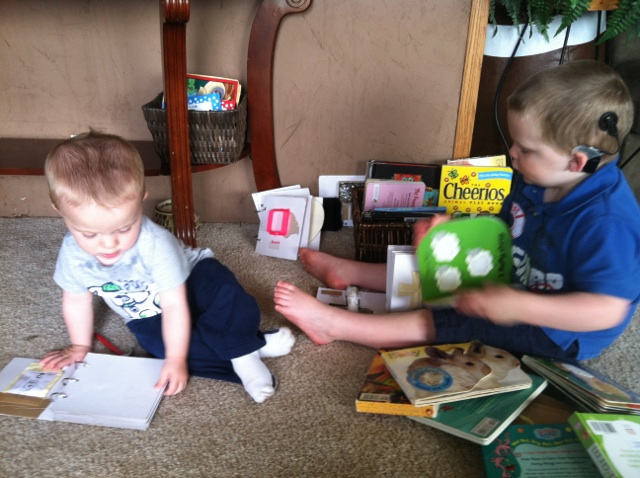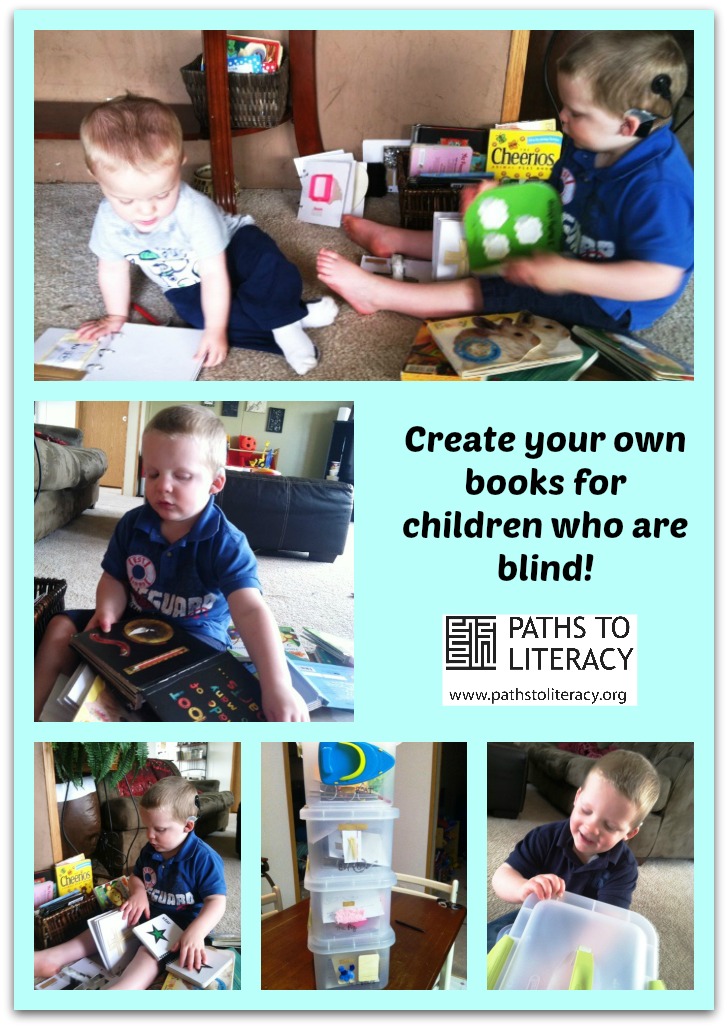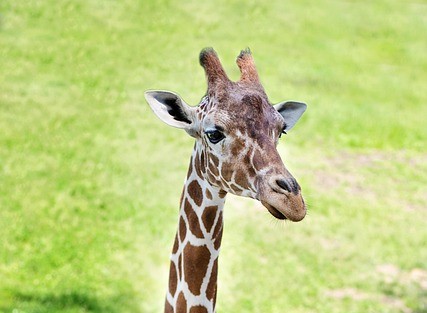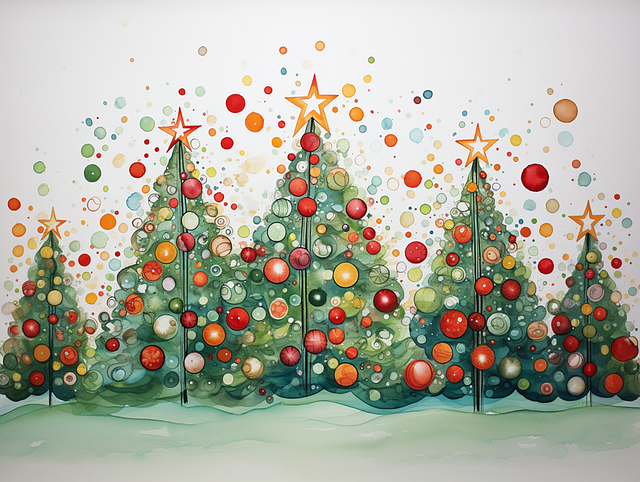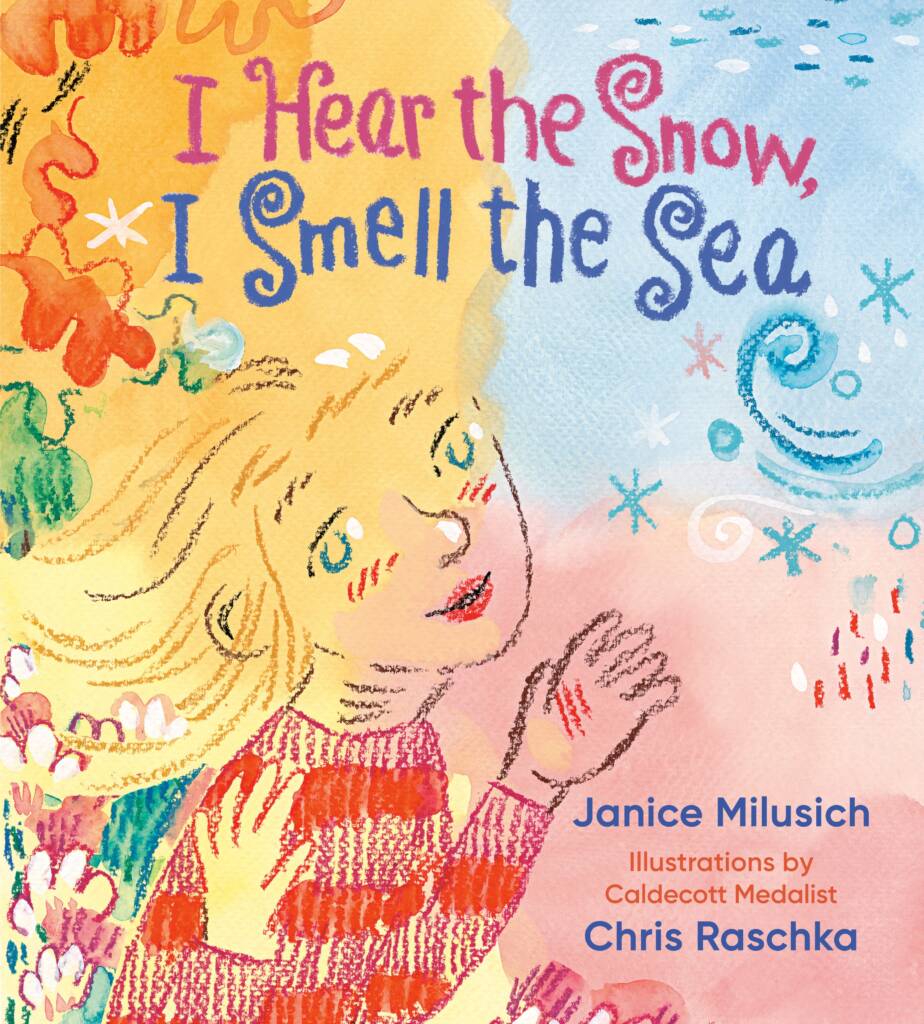Create your own books and activities for the blind or deafblind child in your life!
Liam’s story
A brief summary (very brief) of our Liam’s story: When my son was 2 ½ years old, he became sick with meningitis, the end result left him deafblind. God spared our son’s life…he is our little miracle boy. After months in the hospital and in therapies we finally were able to go home. Our world was changed drastically. Liam’s interests before (books, toys, cartoons, technology, etc..) no longer held the same meanings to him. The excitement of just having him home and alive was also shadowed by a big question, “what does a child who is deaf AND blind enjoy? What is he going to do for play?” along with many other questions. Determination set in for me. My son was STILL going to enjoy books like he did before, he was STILL going to be happy, he was STILL going to have toys and games to play with if I could help it. It was just going to be a ‘little’ different and I was just going to have to get a little creative and make ‘things’ for him myself.
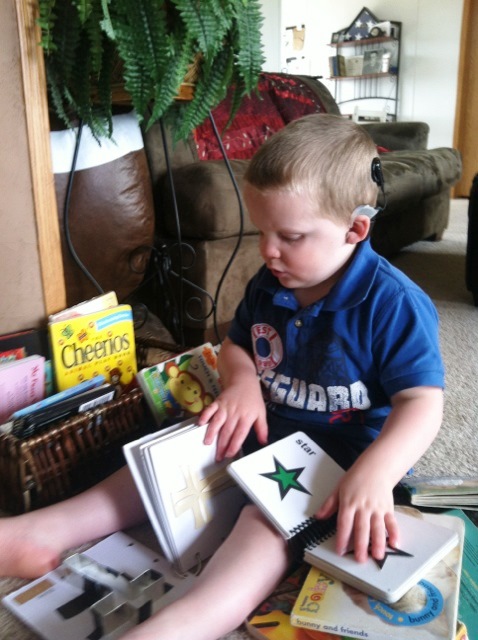
Fast forward to today…Liam is a happy, busy, intelligent, ASL tactile signer, deaf/blind 4 ½ -year-old. He has books he loves and he has many ‘hobbies’ and things he enjoys. It was a journey to get here. A journey that stretched my creativity and couldn’t be done without the help of Pinterest , imagination, research and my ever growing ‘craft cupboard’ ! I wanted today’s blog to be an encouragement and a tool to help parents, grandparents, and teachers who may work with a blind (vision impaired) or deaf/blind child; you can do it too!
Where do I start?
Creating books and/or activities for your child who is blind or deafblind
Tools to invest in and collect:
- hot glue gun
- pre-cut books that are cardboard and are 3-hole punched (see picture) found mine at Michaels. You also can make books out of cardstock but they are not as sturdy.
- materials, of all different textures, that can be glued to a book or puzzle.
- a brailler (I was able to borrow mine)
- an ASL picture dictionary (if applicable)
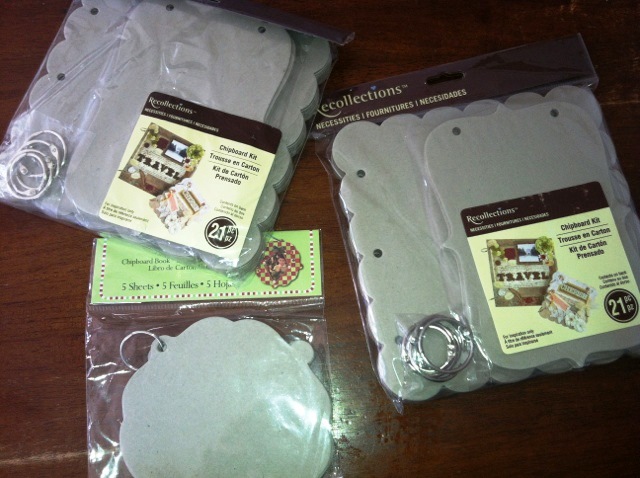
Adapting books and creating tactile books
Touch and feel books:
I started out buying touch and feel books. You can add your own braille, or even hot glue textures or objects to the pages that match the book. For example: I bought Liam a little touch and feel book for Valentine’s Day. I added hearts that I had cut out, to each page (each heart had a different texture-ribbed, glitter, dots, etc.) and I also added some braille to the pages. Tada…a book Liam can feel and read!
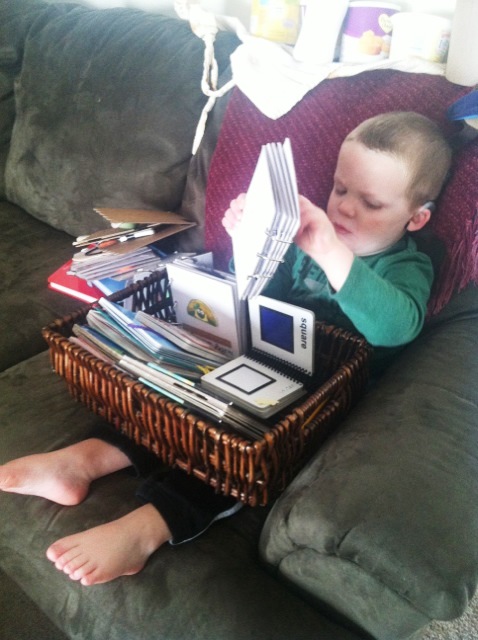
Creating books:
I have created many books tailored to fit my Liam’s interests and needs. He can’t hear or see, so many stories that had a lot of words wouldn’t work for my son at this point in his literacy journey. I have made many concept books and storyboxes for Liam that he loves and are appropriate and meet him at his level.
Concept books
Here are some examples of concept books I have made for Liam:
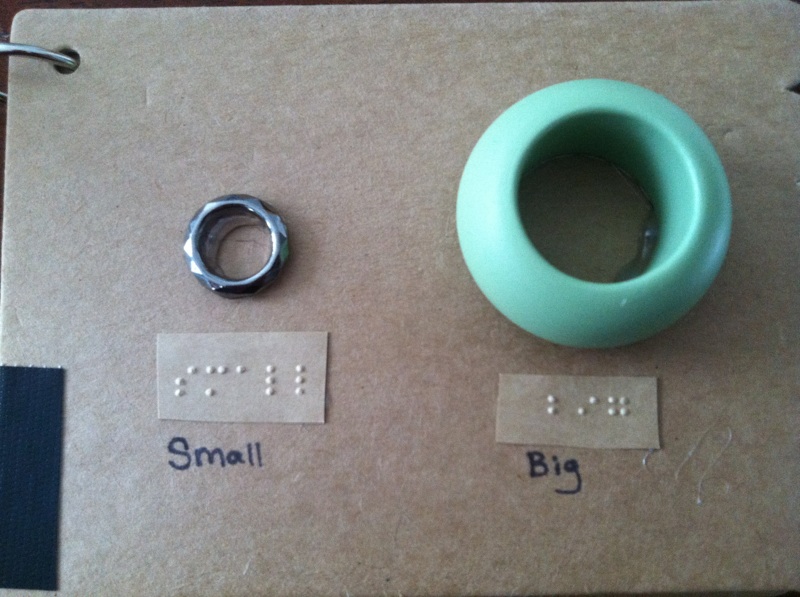
Steps in creating a concept book:
Planning:
What is your child interested in, what does he/she know and need to know, what do you need to buy or gather? Let’s use the idea of a shape book for an example. On a scratch piece of paper I would plan out each page-what ‘real life object’ (to use as the ‘illustrations) each page would have and also what text would be used. I would then create a list of things I would need at the craft store. At the craft store I would be in search of different shapes in different textures. For example: I found a cookie cutter in the shape of a star. Then I found a ‘bumpy’ plastic heart. I also found a wooden circle.
Creating:
Once you have planned your book and bought/gathered supplies it is time to build the book. Hot glue the objects to the page. Add the words in braille (I taught myself braille using a book and taught myself how to use the brailler on a video on YouTube. I also have asked my son’s teacher to make some words for me in braille before I borrowed the brailler.) You also can add a picture or drawing of the ASL signs that are used (if applicable).
Other examples of concept books you could make:
- big/small
- hard/soft
- same/different
- counting books
Story boxes
A story box (in my definition) is simply collecting real life objects that help aid in telling a story. You put the story/book and all the corresponding objects in a box or a bag. Liam LOVES story boxes!
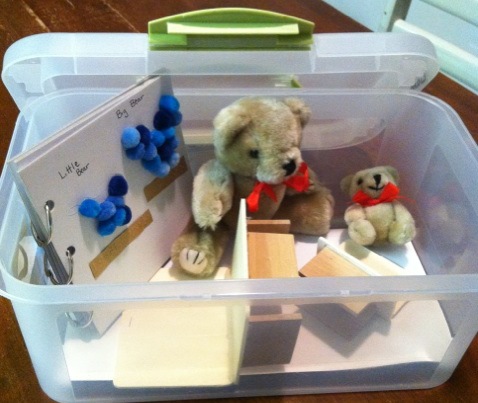
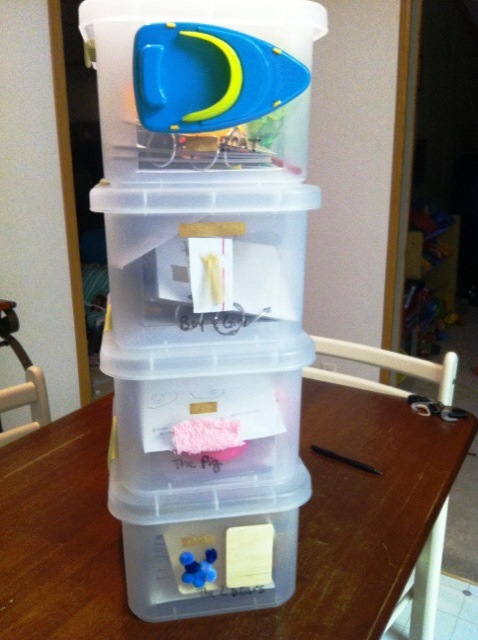
Advantages of storyboxes:
- The objects motivate the child to actively participate in reading the story and retelling.
- The objects used for the story help aid in comprehension.
- You can use story boxes to introduce new vocabulary and ASL signs.
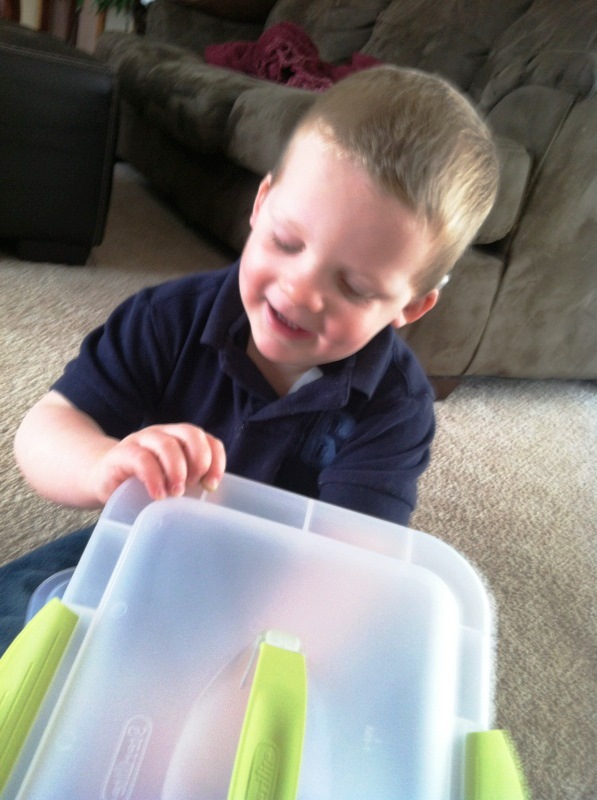
I personally create the books that go into my son’s story boxes. I then know that they perfectly suit his needs, interests, are at his level, and meet a certain learning goal. You don’t have to create your own book. You can use any book you have at home (preferably braille book). For example: if the story is about Cinderella (just an example) you may want to include a doll to represent Cinderella, a shoe to represent the glass slipper, a pumpkin, and a wand. Then make sure to label the outside of the box with braille and an object so the child can more readily choose what story he or she wants to read!!
To learn more about story boxes, see my earlier post on Adapting Goldilocks and the Three Bears.
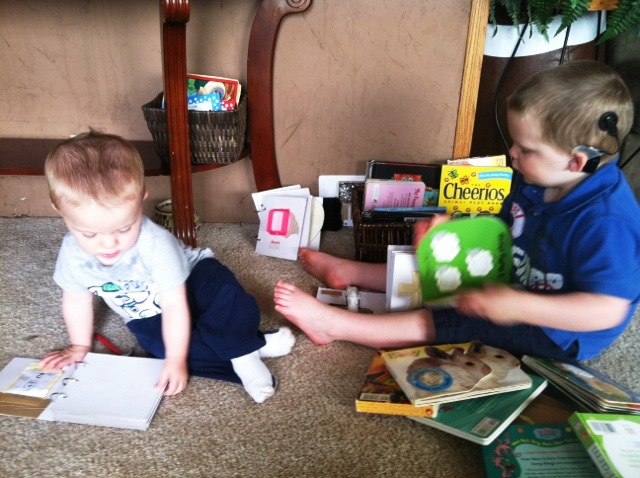
The most important thing is to have FUN! Be creative in finding ways to include your child in activities with the rest of the family.

